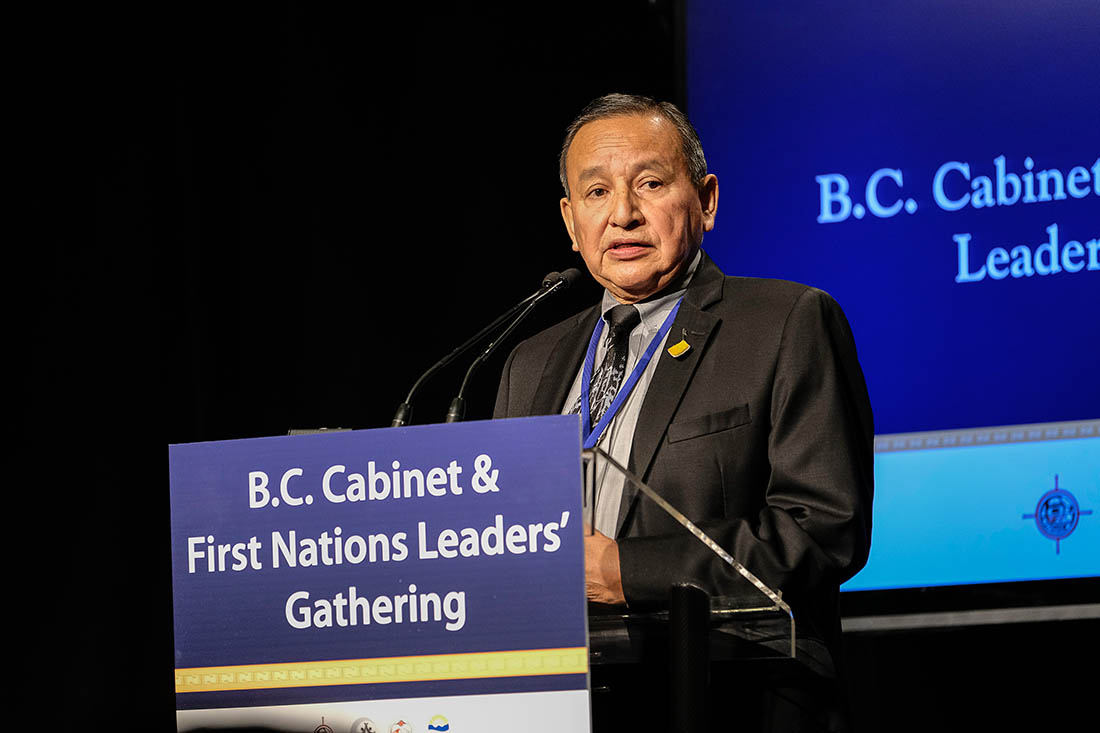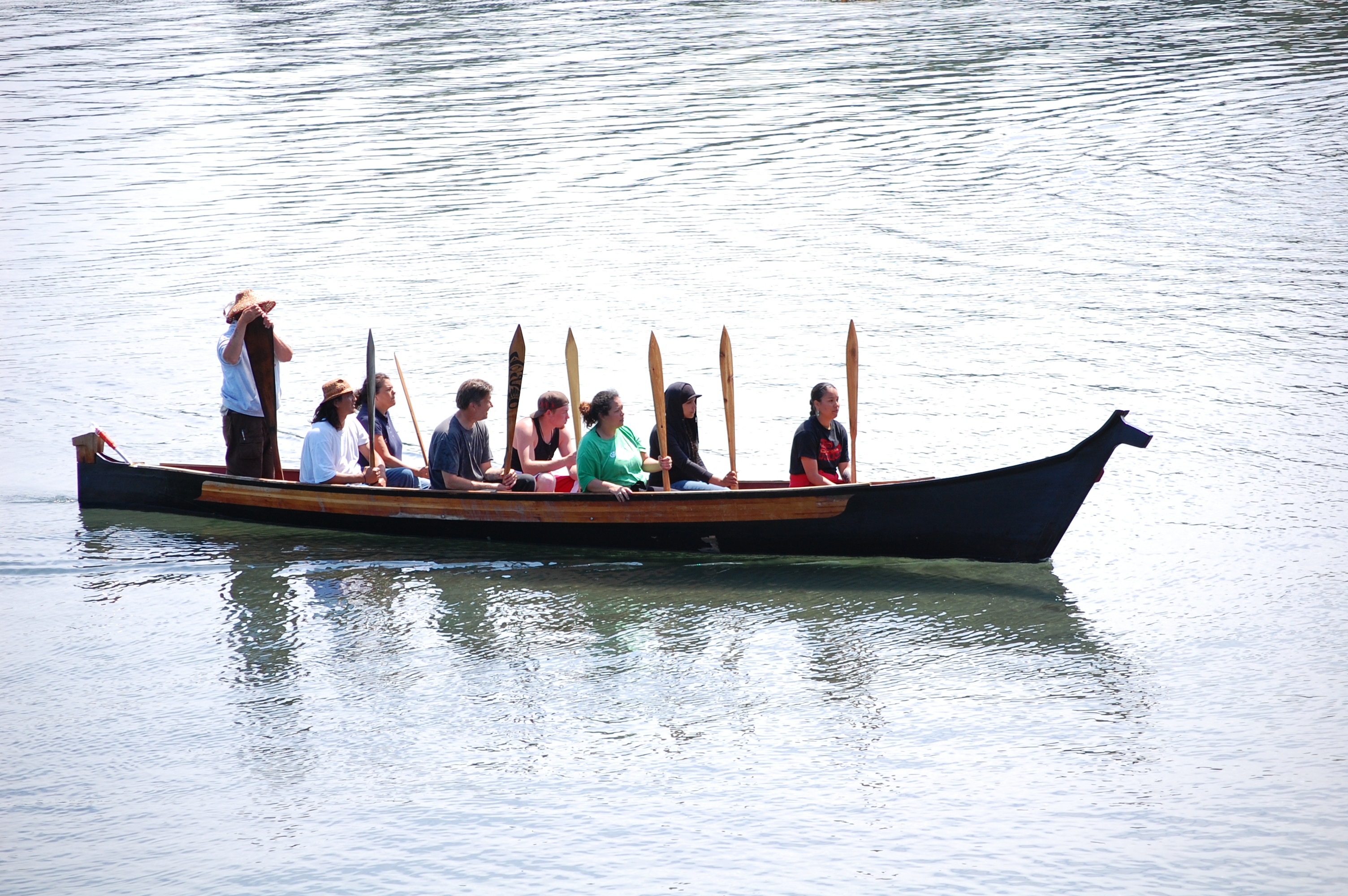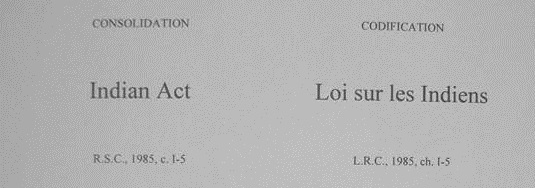The Union of British Columbia Indian Chiefs (UBCIC) was founded in 1969. It is a prominent Indigenous political organization that represents First Nations peoples across British Columbia (see also First Nations in British Columbia). Its establishment marked a significant turning point in Indigenous activism. The organization provides a unified platform for the over 200 First Nations communities in the province. The UBCIC advocates for First Nations political, social and economic rights. Its mission is rooted in pan-Indigenous unity, the recognition of Indigenous sovereignty and the preservation of cultural traditions.
Origins and Founding
The Union of British Columbia Indian Chiefs (UBCIC) was founded in 1969 to serve as a coordinating body for First Nations communities in British Columbia. It was founded to facilitate collective responses to shared challenges. The UBCIC was not intended to replace existing tribal, band or pan-Indigenous organizations. Instead, it was meant to complement them by promoting collaboration across the province. The UBCIC was formally launched during the Indian Chiefs of British Columbia conference in November 1969. The conference, hosted by the Tk’emlúps te Secwépemc, was organized by a coalition of prominent Indigenous leaders. The conference convened at least about 140 delegates from nearly 200 First Nations across the province. It aimed to address the common challenges faced by Indigenous communities. The motto of the conference, “United we stand, divided we perish,” underscored the urgency of solidarity. The organization challenged government policies that sought to undermine Indigenous sovereignty and self-determination. The delegates discussed their shared concerns and vision for united political action. Ultimately, this set the stage for the UBCIC to become a leading voice for Indigenous rights in British Columbia.
Historical Context and Precedents
The formation of the UBCIC did not represent the first effort at pan-Indigenous co-operation in British Columbia. Indigenous communities in the region had a long history of collaboration. For example, in the 18th century the Tk’emlúps te Secwépemc and the Syilx people of Sp’áxmen (Douglas Lake) agreed to the Fish Lake Accord. This was a significant agreement that resolved a long-standing boundary dispute and historical conflicts between the two groups. The principles of such agreements formed a foundation for future pan-Indigenous political organizations (see also Indigenous Political Organization and Activism in Canada).
In the 20th century, various regional and national organizations were established to address Indigenous concerns. However, these organizations were often limited in scope, longevity and influence. This was primarily due to divisions within communities, geographic challenges, narrow political scope and resistance from the Canadian state. A truly province-wide, unified organization was difficult to achieve. However, the political climate of the 1960s created the conditions for greater collaboration.
The White Paper and the Rise of the UBCIC
A significant factor in the formation of the UBCIC was the Canadian government’s 1969 White Paper. Introduced by Prime Minister Pierre Trudeau’s Liberal government, the White Paper proposed sweeping changes to the status of First Nations peoples in Canada. It called for the abolition of the Indian Act, the termination of treaties and the elimination of special legal recognition for First Nations people (see Indian Status). In British Columbia, treaties were largely absent. Indigenous land rights were not recognized by the Canadian government. As a result, the White Paper represented a direct threat to Indigenous autonomy and outstanding land claims. In response, Indigenous leaders in BC mobilized. They used the UBCIC as a platform for resistance. This mobilization contributed significantly to the national opposition to the White Paper. It also laid the foundation for a broader Indigenous rights movement in Canada.
Organizational Structure and Representation
The UBCIC was designed to be a broad, inclusive political entity. It was meant to ensure representation from all First Nations communities across the province. It structured its membership across three levels: elected band chiefs, elected councillors and hereditary chiefs. The chiefs’ council was a 15-member governing body. It functioned as the organization’s board of directors. The chiefs’ council was responsible for implementing policies and guiding the union’s activities. Each council member represented one of the 15 UBCIC districts, which was reduced to 13 districts in 1979. These districts were based on the Department of Indian Affairs district boundaries (see also Federal Departments of Indigenous and Northern Affairs). This ensured representation from all regions of British Columbia. Some activists criticized the use of Indian Affairs-prescribed structures. However, this system helped ensure broad provincial representation.
While the UBCIC’s structure was designed to create a united front, it was not without contradictions. The organization was fundamentally hierarchical. Also, it was exclusionary —especially in regard to gender and status. The UBCIC’s reliance on male-dominated leadership structures and Indian Act definitions of status, band membership and citizenship meant that many Indigenous women were sidelined (see also Women and the Indian Act). For instance, First Nations women were barred from running for elected band council leadership positions until 1951. As such, they were vastly underrepresented in chief and council positions. This automatically excluded them from holding positions in the UBCIC executive. Women's participation was also restricted by the Indian Act’s gendered definitions of status and membership. It excluded Non-Status women from their communities and political discussions.
Gendered Politics and Women’s Participation
Women played a key role in challenging inequalities. They pushed for greater involvement and a redefinition of political unity that would encompass their voices and concerns. They used the language of political and social unity to advocate for their inclusion as essential members of their communities. Also, they showed that they had a stake in the political outcomes of the UBCIC.
Indigenous women’s organizations also increasingly criticized the UBCIC’s male-dominated leadership. They argued leaders overlooked crucial issues such as housing, education and health. These concerns directly impacted women and families. In contrast, many male leaders within the UBCIC prioritized sovereignty and land claims. This created tension within the movement. Women’s groups demanded equal political agency and recognition within the broader struggle for Indigenous rights. They engaged with both national Indigenous feminist debates and alliances with feminist movements. Indigenous women began challenging the Indian Act and fought for recognition as political citizens within the UBCIC and broader Indigenous political structures.
Government Funding and Political Tensions
The issue of funding also produced political tensions. In its early years, the UBCIC received funding from various federal government programs. This financial support allowed the UBCIC to professionalize. It expanded its staff and operations. However, dependence on government funding created conflicts within the organization. Some members argued that it compromised the UBCIC’s political autonomy. This critique culminated in the “Chilliwack decision” of 1975. The UBCIC rejected all forms of government funding and the bureaucratic structures these had created. This signaled a shift toward direct action and grassroots resistance.
Direct Action: "Militant May"
Following the Chilliwack decision, the UBCIC increasingly adopted direct action. These tactics were inspired by the Red Power movement in the United States. In 1975, the UBCIC participated in a month-long direct-action campaign known as “Militant May.” During this time, the UBCIC organized a series of occupations, blockades and other actions across British Columbia. These protests targeted government offices, highways, railways and logging roads. They served to assert Indigenous sovereignty, resist land encroachment and challenge oppressive government policies. The actions of 1975 marked a significant departure from the more bureaucratic strategies of earlier years. It reflected a shift toward independence and community-driven resistance. While ultimately short-lived, the rejection of funding primed the UBCIC for its next challenge: the patriation of the Constitution.
The Patriation Process
During the debates over the patriation of the Canadian Constitution, the UBCIC played a central role in advocating for the recognition of Indigenous rights within the new constitution. The organization sought to define Indigenous sovereignty in ways that respected the diversity of local and regional traditions while promoting pan-Indigenous unity. It called for direct participation in debates, rather than observer status. When its demands were not met, the UBCIC coordinated another direct-action campaign. This action was called the Constitution Express. In 1980, the UBCIC arranged for two passenger trains to bring over 1,000 people from Vancouver to Ottawa. This action was meant to demand Indigenous rights be entrenched in the Constitution. When they did not see results, activists took their message to the United Nations and Europe to bring international attention to the issue. Ultimately, activists were successful in securing Indigenous rights recognition in the 1982 Constitution.
Legacy and Ongoing Relevance

Despite not achieving all of its original goals, the UBCIC’s legacy is profound. It succeeded in establishing a strong political platform for Indigenous voices within Canadian politics. It promoted Indigenous voices through the inclusion of Indigenous rights in the Constitution Act, 1982. While the rights recognized in the Constitution were ambiguous, the UBCIC’s efforts provided a foundation for future political battles.
The organization’s political impact began to wane in the years following the patriation debates. By the late 1970s and early 1980s, the UBCIC’s broad base of support began to erode. Some communities withdrew in favour of other organizations that they felt more accurately represented their interests. Other organizations began to challenge the UBCIC’s monopoly on political authority and its recognition by the Department of Indian Affairs. These groups argued that the UBCIC had failed to achieve true unity and had become overly bureaucratic and disconnected from the grassroots. As a result, many First Nations aligned with these alternative organizations, which led to a fragmentation of the provincial Indigenous political movement.
Today, the UBCIC remains a significant force in British Columbia and the broader context of Indigenous politics. In 2005, the UBCIC joined First Nations Summit and the British Columbia Assembly of First Nations. By 2018, the organization had transitioned from pursuing treaty negotiations to asserting Indigenous sovereignty through legal means and public protest. The organization continues to respond to community need by engaging in pressing issues. It has promoted anti-pipeline protests, Aboriginal rights and title, Missing and Murdered Indigenous Women and Girls and environmental protection. The UBCIC's ongoing legacy shows the resilience and adaptability of Indigenous political movements, which continue to evolve and redefine their strategies in the face of ongoing challenges.

 Share on Facebook
Share on Facebook Share on X
Share on X Share by Email
Share by Email Share on Google Classroom
Share on Google Classroom




